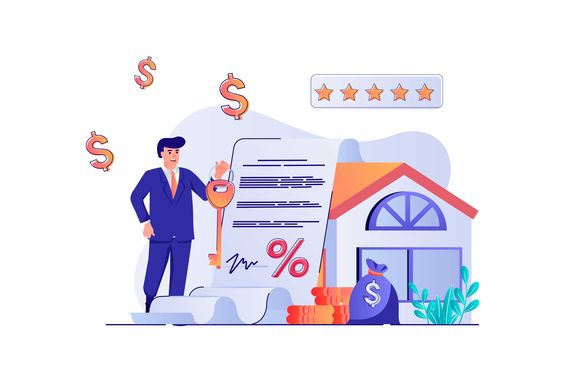
Government loans for small businesses are vital tools that can provide the financial support needed to start, grow, or sustain a business. These loans are typically offered through various federal, state, and local government programs and can be more accessible and affordable than private lending options. This article explores the types of government loans available for small businesses, their benefits, and how to apply for them.
### Types of Government Loans for Small Businesses
1. **Small Business Administration (SBA) Loans**
The U.S. Small Business Administration (SBA) is the primary source of government-backed loans for small businesses. The SBA does not lend money directly but partners with lenders to provide loans that are partially guaranteed by the government, reducing the risk for lenders. Key SBA loan programs include:
– **SBA 7(a) Loan Program**: The most popular SBA loan program, 7(a) loans can be used for a wide range of business purposes, including working capital, equipment purchase, and real estate acquisition. Loan amounts can go up to $5 million.
– **SBA 504 Loan Program**: Designed for major fixed assets like real estate and equipment, 504 loans provide long-term, fixed-rate financing. These loans are available through Certified Development Companies (CDCs) and can reach up to $5 million.
– **SBA Microloan Program**: Targeted at small businesses and startups needing smaller amounts of capital, microloans offer up to $50,000. These loans are provided through nonprofit intermediary lenders.
– **SBA Disaster Loans**: These loans assist businesses affected by natural disasters. They provide low-interest financing to cover losses not fully compensated by insurance.
2. **USDA Business and Industry (B&I) Loans**
The U.S. Department of Agriculture (USDA) offers B&I loans to businesses in rural areas. These loans aim to improve the economic health of rural communities by providing financial backing for business development. The USDA guarantees a portion of the loan, reducing the risk for lenders.
3. **Economic Development Administration (EDA) Loans**
The Economic Development Administration (EDA) offers loans and grants to promote economic growth in distressed communities. These funds can be used for business expansion, infrastructure development, and job creation. EDA loans often target businesses that can have a significant impact on local economies.
4. **State and Local Government Loans**
Many states and local governments offer loan programs to support small businesses within their jurisdictions. These programs vary widely in terms of eligibility criteria, loan amounts, and purposes. They often focus on promoting local economic development, job creation, and industry-specific growth.
Benefits of Government Loans for Small Businesses
1. **Lower Interest Rates**
Government-backed loans typically offer lower interest rates compared to traditional bank loans. The government guarantee reduces the risk for lenders, allowing them to provide more favorable terms.
2. **Longer Repayment Terms**
Government loans often come with longer repayment terms, which can make monthly payments more manageable for small businesses. This can be particularly beneficial for loans used to finance large purchases like real estate or equipment.
3. **Flexible Use of Funds**
Many government loan programs offer flexibility in how the funds can be used. This can include working capital, inventory purchases, business expansion, and refinancing existing debt.
4. **Accessibility for Startups and Underserved Businesses**
Government loans can be more accessible for startups and businesses in underserved communities. Programs like the SBA Microloan cater specifically to new businesses that may not qualify for traditional financing.
5. **Support and Resources**
Government loan programs often come with additional support and resources, such as business counseling, training, and technical assistance. This can help businesses improve their chances of success and growth.
How to Apply for Government Loans
Applying for a government loan involves several steps:
1. **Determine Eligibility**
Each loan program has specific eligibility requirements. Review the criteria to ensure your business qualifies. Factors considered may include business size, industry, location, and financial health.
2. **Prepare Documentation**
Gather necessary documentation, which may include business plans, financial statements, tax returns, and personal financial information. Detailed documentation helps lenders assess the viability and creditworthiness of your business.
3. **Find a Lender**
For SBA loans, identify participating lenders in your area. For USDA loans, contact local USDA offices. State and local loan programs can be accessed through respective economic development agencies.
4. **Complete the Application**
Fill out the loan application accurately and thoroughly. Provide all requested information and documentation to avoid delays.
5. **Work with the Lender**
Work closely with the lender throughout the application process. Be prepared to answer questions and provide additional information as needed. Building a strong relationship with the lender can improve your chances of approval.
#### 6. **Utilize Resources**
Take advantage of resources offered by government agencies, such as SBA’s Small Business Development Centers (SBDCs), Women’s Business Centers (WBCs), and SCORE mentors. These resources can provide valuable guidance and support during the loan application process.
Conclusion
Government loans for small businesses offer a valuable source of funding with benefits such as lower interest rates, longer repayment terms, and flexible use of funds. By understanding the types of government loans available and following the application process, small businesses can secure the financial support needed to thrive and grow. Whether you’re starting a new venture or expanding an existing business, government loans can provide the capital and resources to achieve your business goals.
—